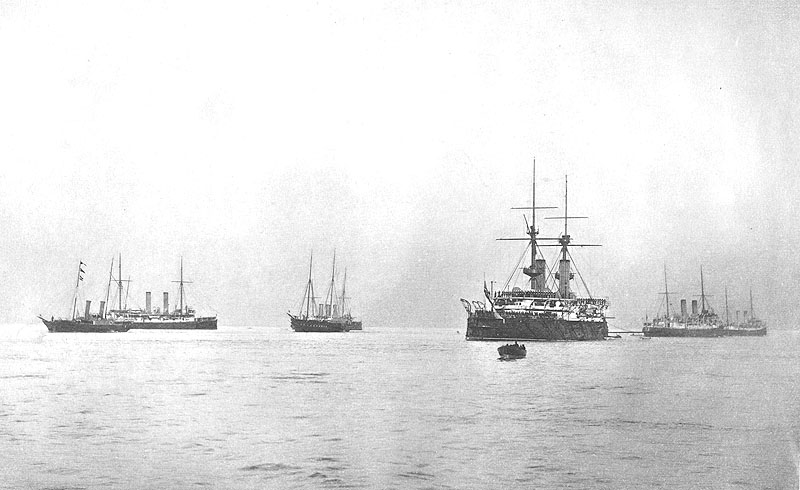
We pack properly to protect your item!
Prince Henry of Battenberg, KG, PC (5 October 1858-20 January 1896) was a descendant of the Grand Ducal House of Hesse and by Rhine who became a member of the British Royal Family through his marriage to Princess Beatrice, the youngest daughter of Queen Victoria and Prince Albert of Saxe-Coburg-Gotha. His Illustrious Highness Count Henry (Heinrich) Maurice of Battenberg was born in Milan, the third son of His Grand Ducal Highness Prince Alexander of Hesse and by Rhine (1823-1888) by his morganatic marriage to Julie Therese née Countess von Hauke (1825-1895), the daughter of a Polish politician. His mother was created Countess of Battenberg with the style Illustrious Highness on marriage. Her brother-in-law, Grand Duke Ludwig III of Hesse and by Rhine, granted her the title Princess of Battenberg with the style of Serene Highness on 21 December 1858. Her children inherited this title and style. Prince Henry of Battenberg received a military education and took up a commission as a lieutenant in the 1st Regiment of the Rhenish Hussars. Because of their close relationship to the Grand Ducal House of Hesse, the Battenbergs came into close contact with various royal and princely families of Europe, including the British Royal House. His elder brother, Prince Louis of Battenberg, had married Princess Victoria of Hesse and by Rhine, his first cousin and a granddaughter of Queen Victoria. In 1884, Prince Henry became engaged to Princess Beatrice of Great Britain and Ireland. Queen Victoria agreed to the marriage on the condition that the couple should make their home with her. Prince Henry and Princess Beatrice married on 23 July 1885 at St. Mildred's Church, Whippingham on the Isle of Wight. On the day of his wedding, the Queen granted Prince Henry the style Royal Highness. This style that was only in effect in Great Britain, not Hesse and by Rhine, where the prince was a Serene Highness. On the same day, a bill to naturalize Prince Henry a British subject passed the House of Lords. The couple adopted the style, Their Royal Highnesses Prince and Princess Henry of Battenberg. The Queen created her new son-in-law a Knight of the Garter and made him a member of the Privy Council. He also became a colonel in the British Army, and afterwards Captain-general and governor of the Isle of Wright and governor of Carisbrooke Castle. Prince and Princess Henry of Battenberg had four children. By Royal Warrant of 13 December 1886, the Queen granted their children the style Highness. This style was only in effect in Great Britain and not Hesse and by Rhine, where as Princes and Princess of Battenberg they were only entitled to the style Serene Highness In November 1895, Prince Henry presuaded Queen Victoria to allow him to go to West Africa to fight in the Ashanti War. He served as the military secretary to the commander-in-chief of British forces, General Sir Francis Scott. He contracted malaria when the expedition reached Prahsu, about 30 miles from Kumasi, and subsequently died aboard the hospital ship HMS Blonde stationed off the coast of Sierra Leone. at Madeira, his body was transferred to the Blenheim, which reached Portsmouth on 4 February 1896; after a short service in the Captain's cabin, the coffin was transferred to the royal yacht Alberta for its journey to the Isle of Wight; the coffin was taken to Whippingham Church for the funeral service the next morning, 5 February 1896, followed by interment. His funeral service took place at St. Mildred's Church on the Isle of Wight on 5 February 1896, followed by interment in what became known as the Battenberg Chapel. The remains of his wife, Princess Beatrice, were placed there in August 1945 and those of his eldest son, the Marquess of Carisbrooke, in July 1961.
Please note: the terms used in our auctions for engraving, etching, lithograph, plate, photogravure etc. are ALL prints on paper, and NOT blocks of steel or wood or any other material. “ENGRAVINGS”, the term commonly used for these paper prints, were the most common method in the 1700s and 1800s for illustrating old books, and these paper prints or “engravings” were created by the intaglio process of etching the negative of the image into a block of steel, copper, wood etc, and then when inked and pressed onto paper, a print image was created. These prints or engravings were usually inserted into books, although many were also printed and issued as loose stand alone lithographs. They often had a tissue guard or onion skin frontis to protect them from transferring their ink to the opposite page and were usually on much thicker quality woven rag stock paper than the regular prints. So this auction is for an antique paper print(s), probably from an old book, of very high quality and usually on very thick rag stock paper.
| |

Powered by eBay Turbo Lister
The free listing tool. List your items fast and easy and manage your active items.